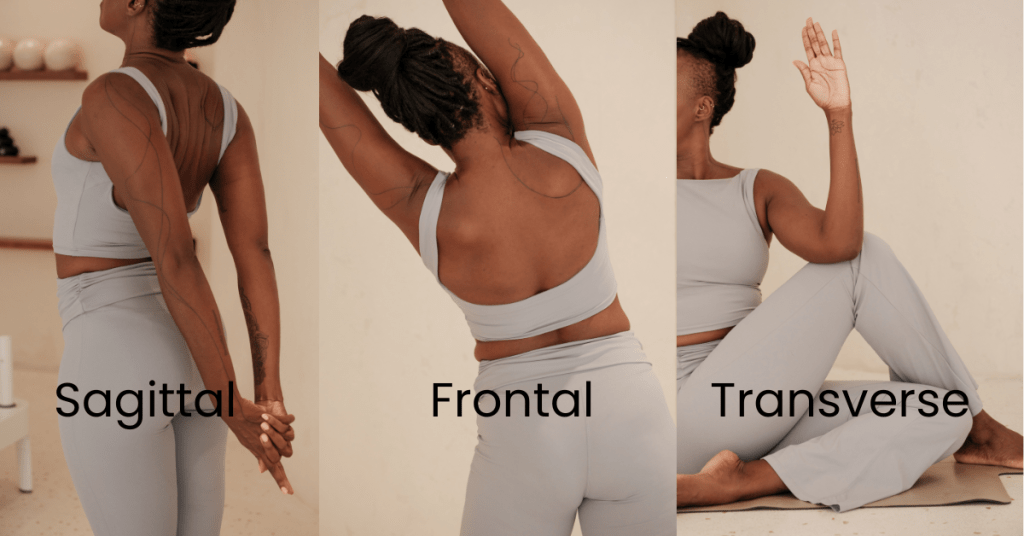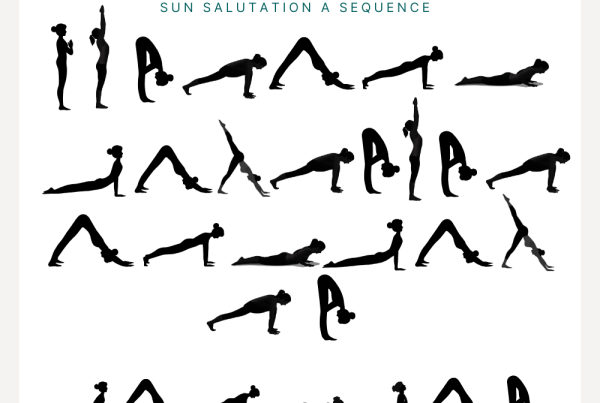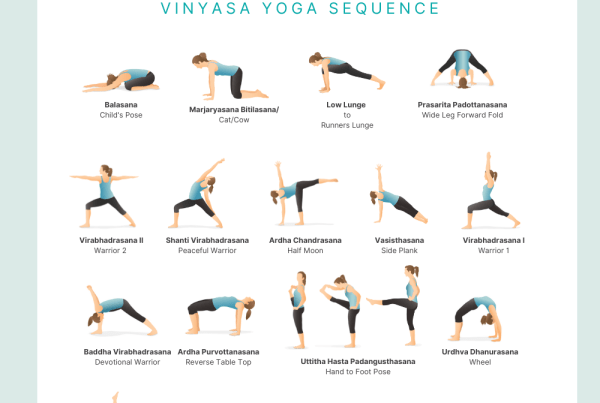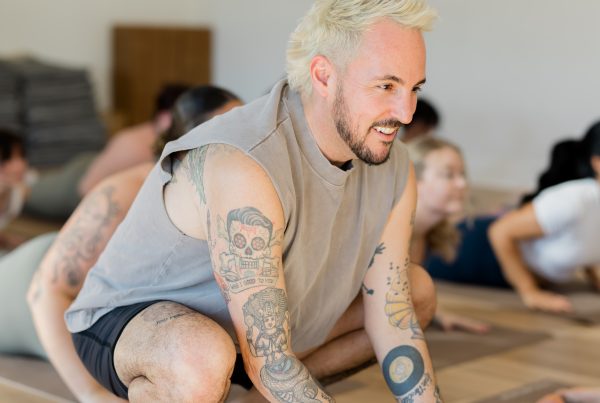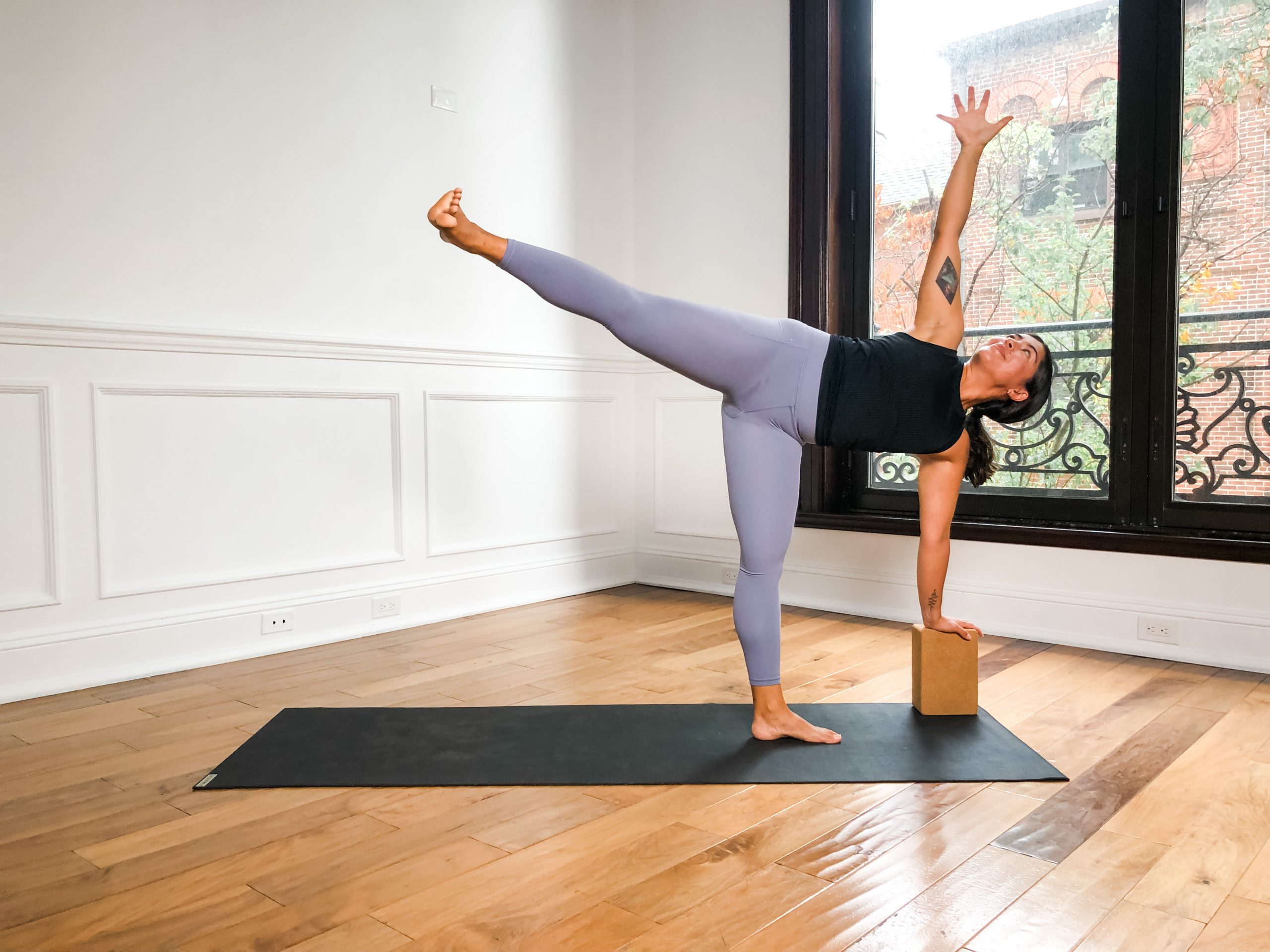
In yoga, there are three planes of motion discussed: The frontal (or coronal) plane, the sagittal plane, and the transverse plane. Each of these planes of motion are responsible for differentiating areas of movement and motion in the body. In the yoga practice, different postures take place in different planes of motion. Most everyday movements do not take place in a single plane.
The frontal, or coronal, plane is where side to side movement takes place, the sagittal plane is where forward and backward movements take place, and the transverse plane is responsible for rotational movements.
Here are each of the planes broken down further.
Sagittal Plane Movements
The sagittal plane separates the left and right sides of the body.
- Flexion – bending (decreasing the angle of a joint)
- Extension – straightening (some joints allow extension past anatomical position)
Frontal Plane Movements
The frontal plane separates the front (anterior) and back (posterior) of the body.
- Abduction – moving a limb out to the side, away from the midline
- Adduction – moving a limb toward the midline
- Lateral flexion – side bending the trunk
Transverse Plane Movements
The transverse plane separates the upper (superior) and lower (inferior) halves of the body.
- External (or lateral) rotation – rotating the front of a limb away from the midline
- Internal (or medial) rotation – rotating the front of a limb toward the midline
- Axial rotation – rotating the trunk
Yoga Poses & the Different Planes of Motion
Sagittal Plane Yoga Poses:
Adho Mukha Svanasana (Downward Facing Dog) is a pose that requires dorsiflexion of the feet, knee extension, hip flexion, spine extension (axial extension), shoulder flexion, elbow extension and wrist extension. Downward Facing Dog can be considered a posture that is done in the sagittal plane (forward and backward motion).
Urdhva Mukha Svanasana (Upward Facing Dog) is another posture that can be explored in the sagittal plane of the body. It requires knee and hip extension, plantar flexion of the feet (opposite from downward facing dog), spinal extension, neutral shoulders, and elbow and wrist extension.
Uttanasana (Forward Fold) is a yoga posture that takes place along the sagittal plane of the body. The front motion of folding forward classifies it
Frontal Plane Yoga Poses:
In Viravhadrasana II (Warrior II), your arms and hands are extending in both directions as you bend your front knee and keep your back leg straight with your chest lifted. The left and right motion classifies this pose as taking place in the frontal/coronal plane.
Trikonasana (Triangle Pose) is another posture where the front of the body is open. The chest stays lifted as the arms extend in both directions (up towards the ceiling, and down towards the mat or leg) while the body extends and lengthens from the crown to the tailbone.
Vrksasana (Tree Pose) is the last posture we’ll explore along the coronal plane. Tree pose has the arms extended up, with the front of the body facing forward, chest lifted and leg reaching down.
Transverse Plane Yoga Poses:
Transverse yoga poses include: Revolved triangle pose, seated and reclined twists, chair twist, and any other rotated posture. These movements allow the body to twist at the core, making them qualify as taking place in the transverse plane of motion.
Learn more about the Planes of Motion in Yoga
However, as mentioned above, it is rare that any movement takes place in a single plane at a time. While these postures all qualify as existing and taking place in those planes of motion, they are also existing simultaneously in other planes.
YogaRenew Teacher Training’s Online Courses can help you better understand the planes of motion and how they apply specifically to the yoga practice. We even published an entire Planes of Motion Series to help you dive deeper into them and apply them to your yoga teachings or personal practice.


